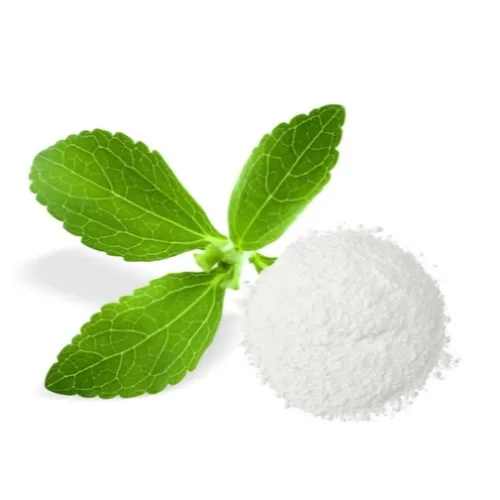Warning: Undefined array key "title" in /home/www/wwwroot/HTML/www.exportstart.com/wp-content/themes/1198/header.php on line 6
Warning: Undefined array key "file" in /home/www/wwwroot/HTML/www.exportstart.com/wp-content/themes/1198/header.php on line 7
Warning: Undefined array key "title" in /home/www/wwwroot/HTML/www.exportstart.com/wp-content/themes/1198/header.php on line 7
Warning: Undefined array key "title" in /home/www/wwwroot/HTML/www.exportstart.com/wp-content/themes/1198/header.php on line 7
- Afrikaans
- Albanian
- Amharic
- Arabic
- Armenian
- Azerbaijani
- Basque
- Belarusian
- Bengali
- Bosnian
- Bulgarian
- Catalan
- Cebuano
- China
- China (Taiwan)
- Corsican
- Croatian
- Czech
- Danish
- Dutch
- English
- Esperanto
- Estonian
- Finnish
- French
- Frisian
- Galician
- Georgian
- German
- Greek
- Gujarati
- Haitian Creole
- hausa
- hawaiian
- Hebrew
- Hindi
- Miao
- Hungarian
- Icelandic
- igbo
- Indonesian
- irish
- Italian
- Japanese
- Javanese
- Kannada
- kazakh
- Khmer
- Rwandese
- Korean
- Kurdish
- Kyrgyz
- Lao
- Latin
- Latvian
- Lithuanian
- Luxembourgish
- Macedonian
- Malgashi
- Malay
- Malayalam
- Maltese
- Maori
- Marathi
- Mongolian
- Myanmar
- Nepali
- Norwegian
- Norwegian
- Occitan
- Pashto
- Persian
- Polish
- Portuguese
- Punjabi
- Romanian
- Russian
- Samoan
- Scottish Gaelic
- Serbian
- Sesotho
- Shona
- Sindhi
- Sinhala
- Slovak
- Slovenian
- Somali
- Spanish
- Sundanese
- Swahili
- Swedish
- Tagalog
- Tajik
- Tamil
- Tatar
- Telugu
- Thai
- Turkish
- Turkmen
- Ukrainian
- Urdu
- Uighur
- Uzbek
- Vietnamese
- Welsh
- Bantu
- Yiddish
- Yoruba
- Zulu
Nov . 04, 2024 11:54 Back to list
Exploring the Origins and Production Methods of Xanthan Gum in Various Industries
Understanding the Origin and Production Process of Xanthan Gum
Xanthan gum is a polysaccharide widely employed in the food and pharmaceutical industries due to its exceptional thickening and stabilizing properties. This complex carbohydrate is produced through the fermentation of sugars by the bacterium *Xanthomonas campestris*, which is primarily known for its role in plant pathology. This article will delve into the origin of xanthan gum and describe the intricate production process that makes it an essential ingredient in various products.
Origin of Xanthan Gum
The discovery of xanthan gum can be traced back to the early 1960s when scientists from the United States Department of Agriculture (USDA) were studying *Xanthomonas campestris*, a bacterium that caused black rot in cruciferous vegetables such as cabbage and broccoli. Researchers found that this microorganism could produce a viscous substance when cultivated in a sugar-rich environment. This polysaccharide was later named xanthan gum, and its remarkable properties were recognized as a potential resource in numerous applications.
Xanthan gum's ability to form a gel-like structure in solution made it particularly attractive for the food industry. Its versatility also allowed it to be utilized in non-food products, such as cosmetic formulations and industrial applications. Over the years, xanthan gum has become a staple thickening agent in salad dressings, sauces, dairy products, and gluten-free formulations, making it essential for many modern recipes.
Production Process of Xanthan Gum
The production of xanthan gum consists of several key stages fermentation, purification, drying, and milling. Each step is crucial to ensuring the final product's quality and effectiveness.
understanding the origin and production process of xanthan

1. Fermentation The production process begins with the selection of a suitable carbon source for the fermentation. Common substrates include glucose, sucrose, or molasses. The selected sugar is then mixed with nutrients and inoculated with *Xanthomonas campestris* cells in a controlled environment. The fermentation typically takes place in large bioreactors under specific temperature, pH, and aeration conditions to optimize xanthan gum production. During fermentation, the bacteria metabolize the sugars and secrete xanthan gum into the fermentation broth.
2. Purification Once fermentation is complete, the broth contains xanthan gum, bacterial cells, unutilized sugars, and other byproducts. The next step is to separate the xanthan gum from these impurities. This is usually done by a combination of filtration and precipitation. Ethanol or isopropanol is often added to the broth to precipitate xanthan gum, which can then be collected through centrifugation or filtration. This purification step is crucial for ensuring that the final product is free from contaminants and retains its desired properties.
3. Drying After purification, the xanthan gum is still in a wet form and requires drying to enhance its shelf life and usability. The wet xanthan gum is typically dried in industrial dryers, such as spray dryers or vacuum dryers. This process transforms the viscous material into a fine powder while preserving the polysaccharide’s functional properties. The drying conditions must be carefully controlled to avoid degrading the quality of the xanthan gum.
4. Milling The final step in the production process is milling, where the dried xanthan gum is ground into a fine powder suitable for various applications. The powder is then packaged and labeled for distribution, ensuring that it meets the necessary food safety standards and regulatory requirements.
Conclusion
Xanthan gum is a remarkable biopolymer that has revolutionized the food and pharmaceutical industries with its unique properties. From its origins in plant pathology research to its intricate production process involving fermentation, purification, drying, and milling, xanthan gum exemplifies the intersection of microbiology and industrial applications. Its ability to enhance food texture and stability has made it a valuable ingredient in countless products, thus showcasing the importance of understanding both the origin and production processes of this versatile polysaccharide. As research and technology continue to advance, xanthan gum may further evolve, leading to new applications and improved formulations in the future.
Latest news
-
Certifications for Vegetarian and Xanthan Gum Vegetarian
NewsJun.17,2025
-
Sustainability Trends Reshaping the SLES N70 Market
NewsJun.17,2025
-
Propylene Glycol Use in Vaccines: Balancing Function and Perception
NewsJun.17,2025
-
Petroleum Jelly in Skincare: Balancing Benefits and Backlash
NewsJun.17,2025
-
Energy Price Volatility and Ripple Effect on Caprolactam Markets
NewsJun.17,2025
-
Spectroscopic Techniques for Adipic Acid Molecular Weight
NewsJun.17,2025

